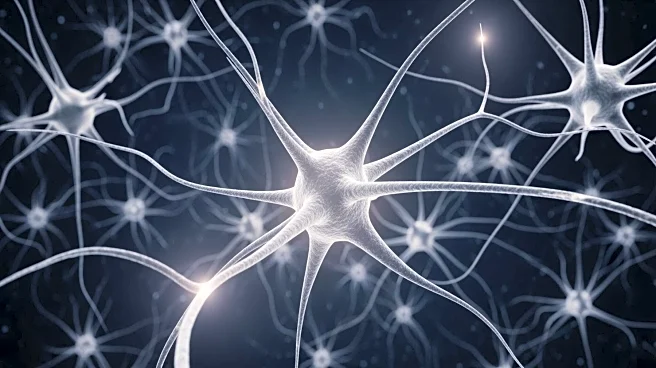What's Happening?
A study has found a connection between shyness and spontaneous activity in the cerebellum, a brain region traditionally associated with motor functions. The research, published in Personality and Individual
Differences, suggests that shyness is linked to lower synchronized neural activity in the cerebellum, particularly in individuals sensitive to social threats. The study involved 42 university students who underwent fMRI scans and completed questionnaires measuring shyness and sensitivity to social threats. The findings indicate that the cerebellum plays a role in emotional and social processing, challenging previous assumptions that shyness is primarily related to the prefrontal cortex and amygdala.
Why It's Important?
This research provides new insights into the neural basis of shyness, suggesting that it may be influenced by brain regions beyond those traditionally associated with emotion and social processing. Understanding the cerebellum's role in shyness could lead to more effective interventions for individuals struggling with social anxiety. The study also highlights the importance of considering the Behavioral Inhibition System, which governs sensitivity to threats, in understanding personality traits like shyness. These findings could inform therapeutic approaches, emphasizing the need to address underlying neural mechanisms.
What's Next?
Future research may explore how interventions targeting cerebellum activity and the Behavioral Inhibition System could reduce social inhibition. Techniques like neurofeedback and real-time fMRI could be used to help individuals manage their sensitivity to social threats. Researchers may also investigate different subtypes of shyness to determine if they involve distinct neural patterns, potentially leading to personalized treatment strategies.
Beyond the Headlines
The study encourages a reevaluation of shyness, viewing it as a form of emotional intelligence rather than a deficiency. It suggests that shyness reflects a heightened sensitivity to social cues, which can be advantageous in certain contexts. This perspective could shift societal attitudes towards shyness, promoting greater acceptance and understanding of diverse personality traits.











